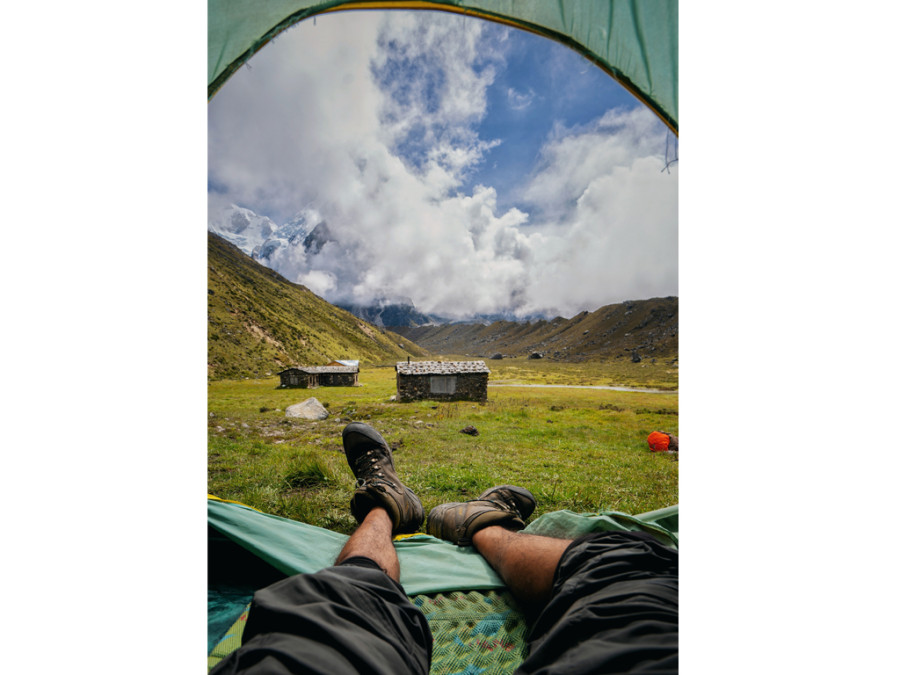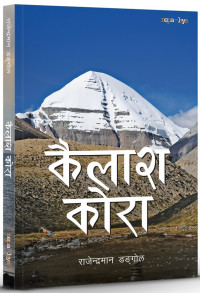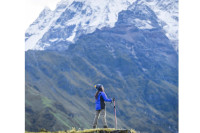Travel
Trekking in the mountains during a pandemic
While the rest of the country was under lockdown, the Ghumante team, a group of travel enthusiasts, was exploring new trails trekkers in a bid to promote monsoon trekking.
Shashwat Pant
“It had rained all night. So sleeping in a tent at over 4,000 metres without sleeping bags was tough,” says Adhikari, a photographer also known by his alias Shutter Psycho. “But when the clouds opened up and the mountains showed up at the break of dawn, we forgot everything else. Trekking during the monsoon is an enchanting experience.”
Ghumante, a group of travel enthusiasts who are known for their popular YouTube channel, over the course of a few years have been travelling to remote places across Nepal, taking paths not many have wandered into. Ever since they started, the Ghumante team have tried to promote trails and routes which are offbeat and since last year they have also been trekking during the monsoon to see if trekking during the season can be marketed.
Thus, while the rest of the country was under lockdown for the past three months, the team, after getting a travel pass from the Nepal Tourism Board, was walking on trails deep in Lamjung and Kaski, documenting new places in the area.
“There is a different aura about trekking during the monsoon,” says Adhikari. “It’s misty and cloudy and the trails are slippery and dangerous and full of leeches. But when the rain stops, the place changes. What is normally brown and dry during the autumn is fresh and lush green. You’re floating above the clouds walking past wildflowers. One has to experience it to know more.”
The team had left for Meme Pokhari just after Janai Purnima, in the beginning of August. After that they went to Sikles, a picturesque Gurung village in Kaski, then to a village further from Sikles. The team does not want to disclose the name of the village until they release their video.
“The area is very pretty. There is a pond, on the lap of Himalchuli, but a lot needs to be done in terms of infrastructure. However, the video will give people a good idea that it's not that though going to places like these,” he says.
Trekkers mostly take on hiking trails either during the autumn, when skies are clearer and temperatures just right, or the spring when the trails are blossoming with fresh flowers. And trekking in the monsoon is not on most people’s itineraries, but it is definitely something that people must pick up, says Adhikari.
“I feel we’re wasting one season. Trekking in the monsoon has not been marketed enough. Only a handful of people trek during this time but it's time to promote it in a manner which is appealing,” says Adhikari.
He adds that there is a misconception about trekking in the monsoon, and while some of it is justified, particularly those pertaining to the country’s lack of infrastructure, he says that if a person is prepared enough, s/he can do it without much problems.
“The problem is people don’t know how to trek during the monsoon. Once they get the hang of that, it won't be as tough as many think it is,” he says.
Having said that, the government too has to do its bit. “If you travel to routes that aren’t commercial, you run the risk of getting lost because the markers aren’t very visible. We trekked to Kanchenjunga Base Camp last year and had a torrid time finding trails. The tourism industry needs to work on small things like this if we want to see Nepal make a comeback in the trekking front.”
But for that to happen, effort needs to be put in by the government he says as hosting travel marts and various events and not spending on infrastructure up in mountains will just not work.
“From my experience travelling around Nepal, I’ve realised that the tourism board and the ministry just talk big. When it comes to working, they aren’t as proactive. We need better trails and tea houses. We need to be able to give the tourists a good experience. As long as we ensure that one tourist is happy, others will come. If we cant assure that, people will not come,” he says.
He says that Nepal needs to come up with different trails so that it can engage more and more tourists and that will not happen without the support from the tourism industry. There are many people and companies like Ghumante who can help them in this aspect, says Adhikari.
“They take a lot of money from tourists but the trails are a mess. Something has to give. We need to make sure that these trails are safe and clean and well marked,” he said.
Travelling during the pandemic was also a bit of a strange experience for the team, says Adhikari. “We went there because the locals had called us. And as we had been walking in the hills for over a month, and none of us showed any symptoms, explaining we were safe wasn’t as big an issue as we thought,” he says. But the locals of many villages did ask them to wash and sanitise their hands, which shows that everyone knew about the pandemic and were keeping safe, he adds.
Because of the pandemic, the current scenario for the trekking sector doesn’t look great. But the people living on the trails can only sustain their livelihoods if domestic tourists hit the trails. Adhikari says that a lot of the people living in the trails are hopeful that people will come now that the trekking season is almost here and lockdown restrictions have been almost completely lifted across the country.
“They all say that people will come. And a part of me feels that people will go. With people stuck at home for a long time, maybe people will go. I hope they do,” he says.




 8.12°C Kathmandu
8.12°C Kathmandu










